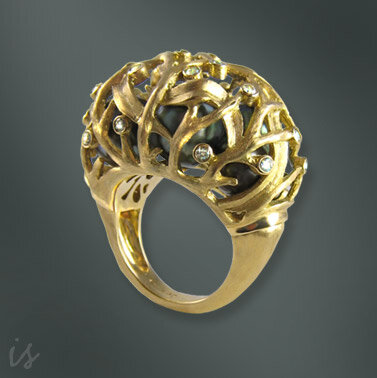PROCESS: Superlative Craftsmanship Distinguishes Designer’s Work
RELEASE AT WILL
MEDIA CONTACT: IAN SAUDE, T. +1.805.784.0967 (EXT. 402) | E. media@iansaude.com
(Los Angeles, CA)—
San Luis Obispo, CA — With his focus on high quality, fashion-forward fine jewelry and lifestyle products, California-based designer IAN SAUDĒ employs the finest materials and painstaking methods of hand-craftsmanship to realize his designs.
Although some jewelry designs are available in platinum or in rhodium-plated silver, Saudē’s jewelry is crafted predominantly in18K gold. Their ateliers in Thailand work under the strict supervision of master European goldsmiths trained in Paris and Vicenza, Italy’s famous City of Gold. Having worked with such fabled jewelry houses such as Chaumet, Mouawad, and Bulgari, these master jewelers realize Saudē’s design concepts using materials and methods that conform to the strictest standards of purity and excellence used in the Europe jewelry industry — standards more stringent than those typically employed in the United States.
According to the specific demands of the piece, a design might first be sketched and then modeled in wax for vacuum casting, or it might be entirely hand-fabricated. It might be rendered in 3-D by using the most modern technology and then finished by laser, or it may be painstakingly assembled by a time consuming hand-method that is centuries old. Regardless of the path he takes to get there, Saudē’s goal remains the same: to design and create the highest quality jewelry possible — jewelry that people will fall in love with — unlocking its secrets over the decades to come.
Stone setting techniques include both pavé and the more demanding micro-pavé (executed under a watch-maker’s microscope) as well as numerous other classic hand methods. “We use model makers, goldsmiths and setters whose whole career is specialized in a particular kind of work,” Saudē explains. “So depending on what a design requires, up to eight or ten different people might be directly involved in creating a single finished piece. Most of the final polishing is checked under a 10-power loop for any minor inconsistencies. It might take an expert finisher 4 or 5 hours to polish one of our pieces, where a typical factory would finish the same piece in about half an hour. Even our silver is finished according to a stricter standard than most American jewelers. Lots of people these days talk about Certified Fair Trade, but we have always used the best artisans at our disposal. The best way to insure economic and environmental sustainability is to work with people who pursue excellence, rather than the bottom line! If everyone did that, the world would be a much more sane and beautiful place.”
Prominent features of the current collection include natural champagne and mocca colored diamonds, shaded from light to dark within a single piece. Also gemstones such as kunzite, imperial morganite, and sapphires in exotic shades like lavender and fire-red add color to the predominantly neutral palette. Saudē says, “I love colored gemstones, but many people like neutral colors because they easily coordinate with clothing. White diamonds are everywhere, so I was looking for something different. I settled on a sophisticated palette of neutrals by using the gray, coffee, and chocolate shades in diamonds and south sea pearls, and then I injected color judiciously for a bold but elegant effect.” He stresses how beautifully the neutral stones coordinate with the yellow and rose gold, “They are flashy without being overdone, which makes them for wearing anytime, not only for special events.”
Besides jewelry, Saudē also offers a lifestyle line that currently centers on cashmere. Throws, oversized blankets, travel items and personal accessories like scarves and wraps mainly comprise the line. Assortments change seasonally, but most of the pieces are hand-loomed in the Himalayan kingdom of Nepal using cashmere from Mongolia and the Tibetan Plateau. Yarns may be machine or hand-spun, and generally use around 15 micron long staple fibers — significantly more refined than the 18-19 micron short fiber yarns that can legally be labeled “cashmere” in the United States.
Numerous hand dying and finishing methods, embroidery and other handicraft techniques are used to create collections of exceptional quality and value. Saudē explains, “In addition to our larger units, I have great relationships with a number of small independent workshops in Nepal, because I lived in the region for over a decade. We know each other, and each of them specialize in a particular type of work. Because I understand what each workshop does the best, it helps me create a range of interesting products for our own brand and to reliably provide a unique level of hands-on creative support for our designer and private-label customers.”
###







